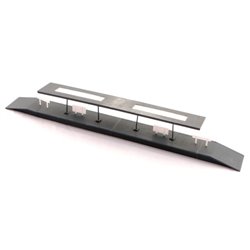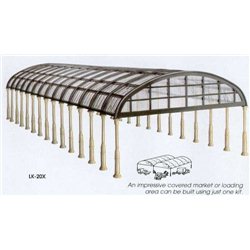Generally, plastic model plane kits do not come with plinths supplied. Nowadays, the majority of kits are designed to...
No products
Product successfully added to your shopping cart
There are 0 items in your cart. There is 1 item in your cart.
Search Tips
Christmas and New Year
We are dispatching orders every weekday apart from Christmas Day, Boxing Day and New Year's Day.
If you order is time critical, select next day delivery at checkout.
The shop in Sandown is closed from 25th December, reopening on 30th December.
Where should I put the canopies on my platform?
To ensure your model railway platform looks realistic, consider the following placements for canopies:
Main Platform Areas: Position canopies over the central sections of the platform where passengers are most likely to wait. This includes the areas near station buildings, ticket offices, and main entrances.
Along the Platform Edges: Place canopies along the edges of the platforms, especially where trains regularly stop to allow passengers to board and alight. This provides shelter from the weather while passengers are waiting.
Near Important Features: Canopies should be situated near key features such as seating areas, information boards, and ticket machines. This ensures that passengers have shelter while using these facilities.
Length of the Platform: Depending on the size of your platform, consider having canopies that extend along a significant portion of the platform length. This can vary, but typically, a well-sized canopy will cover at least 50% to 75% of the platform length in busy stations.
Station Type Considerations: For smaller or rural stations, smaller canopies or shelters might be more appropriate, typically located near the station building or main waiting area. For larger, urban stations, more extensive canopies are suitable, often covering most of the platform.
Historic Accuracy: If your model railway is set in a specific era, research the typical canopy designs and placements from that period. For example, Victorian stations often featured ornate, decorative canopies, while modern stations have more streamlined, functional designs.
By following these guidelines, you can create a realistic and functional model railway platform that accurately reflects a typical UK station.
Click here to receive the tips weekly in your mailbox. You can unsubscribe at any time.










